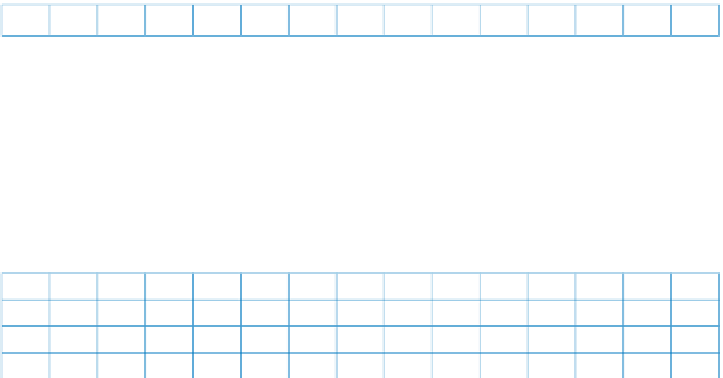Geography Reference
In-Depth Information
Table 6.1
Connectivity matrix for the network shown in Figure 6.1
=
matrix
C
1
ID1
2
3
4
5
6
7
8
9
10
11
12
13
Sum
1
0
0
1
0
0
0
0
0
0
0
0
0
0
1
2
0
0
0
1
0
0
0
0
0
0
0
0
0
1
3
1
0
0
1
0
0
0
0
0
0
0
0
0
2
4
0
1
1
0
0
0
1
1
0
0
0
0
0
4
5
0
0
0
0
0
0
1
0
0
0
0
0
0
1
6
0
0
0
0
0
0
0
1
0
0
0
0
0
1
7
0
0
0
1
1
0
0
0
1
1
0
0
0
4
8
0
0
0
1
0
1
0
0
0
1
1
0
0
4
9
0
0
0
0
0
0
1
0
0
0
0
0
0
1
10
0
0
0
0
0
0
1
1
0
0
0
1
1
4
11
0
0
0
0
0
0
0
1
0
0
0
0
0
1
12
0
0
0
0
0
0
0
0
0
1
0
0
0
1
13
0
0
0
0
0
0
0
0
0
1
0
0
0
1
matrix multiplication is the same if the matrix is multiplied by itself and not by its
transpose, as the connectivity matrix is symmetric, for example the value for column 2,
row 3 is the same as the value for column 3, row 2.
To generate the top let value in the new matrix
C
2
take each element in that row
(from let to right) from the i rst matrix (i.e.
C
1
) and multiply it by each element in that
column (from top to bottom) of the second matrix (since we are multiplying one
matrix by itself, the i rst and second matrix are the same). In words, with the column
given i rst and then the row (where ID is the node label given in Table 6.1 and ID(1,1)
is 0 while, for example, ID(1,3) is 1):
ID(1,1) ¥ ID(1,1) +
ID(2,1) ¥ ID(1,2) +
ID(3,1) ¥ ID(1,3) +
…
and so on until the end of the column and row. At that point add together all the
multiplied values. h is i nal summed value is written to cell 1,1 in the new matrix
C
2
.
Note that the row number steps up (increments) in the i rst matrix while the column
number increments in the second.
Next move on to column 2:
ID(1,1) ¥ ID(2,1) +
ID(2,1) ¥ ID(2,2) +
ID(3,1) ¥ ID(2,3) +
…
and so on until the end of the column and row. At that point add together all the
multiplied values. h is i nal value is written to cell 2,1 in the new matrix
C
2
.






Search WWH ::

Custom Search